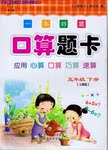题目内容
【题目】阅读下列短文,从每题所给的四个选项(A、B、C和D)中,选出最佳选项。 Imagine looking f or your lost dog. You step into a cave. But instead of the dog, you find beautiful cave paintings. You see paintings of horses, deer, and bison drawn in black, brown, red and yellow. Your first question would probably be“Who did this? ”
This is what happened to four French boys in 1940. They found the Lascaux caves. The paintings the boys discovered in those caves are about 17, 000 years old. They were drawn by the ancient people called Cro-Magnon(克鲁马努人).
Cro-Magnons looked much like people of today. They used tools, such as fishing nets. But their art was extremely good. The main cave at Lascaux is called Great Hall of Bulls, which has a picture of bulls and horses in many colours. The largest animal is 18 feet long. There are smaller animals, such as bison, stags and a bear. There is also a strange spotted two-horned(两只角的)animal.
To the left of the main cave are the most famous paintings that are the drawings of animals in many different colours. One painting is called Little Horses. On the ceiling are horses and cows. The most unusual sight may be in the Shaft of the Dead Man where there is a rhinoceros, a carefully drawn dead man, an injured bison and a bird.
Why did Cro-Magnon artists do these beautiful drawings on cave walls? Did the drawings call upon some magic power? Did the Cro-Magnon people hope that the drawings would bring good luck? There is one thing the paintings seem to tell us. The Cro-Magnons were interested in the world. They looked at beauty and they understood it.
(1)The author uses the word“you”in Paragraph 1 to_________.
A.attract readers’ attention
B.make it clear that this is a true story
C.give readers good directions to find the caves
D.compare modern people wit h Cro-Magnon people
(2)Most of the drawings in the caves are about_________.
A.boys
B.tools
C.humans
D.animals
(3)What does the passage mainly tell us?
A.Cave paintings are beautiful.
B.Who found the beautiful cave paintings.
C.The Lascaux caves hold colourful ancient paintings.
D.Drawings of horses are on the walls of the Lascaux cav es.
(4)The passage is most probably taken from_________.
A.a research paper
B.a cultural magazine
C.a science newspaper
D.a travel guide
【答案】
(1)A
(2)D
(3)C
(4)B
【解析】(1)推理判断题。第一段虚构了一个以读者为主人公的场景, 目的就是为了引起读者的阅读兴趣。(2)细节理解题。根据第三、四段对壁画的描述可知, 洞内的绝大多数壁画是关于动物的。(3)主旨大意题。文章开头指出了发现壁画的过程, 接下来的内容描述了这些壁画。只有C项能够全面概括全文内容。A项范围太广, 且有些偏题; B、D两项只是文中的细节, 不能概括全文。(4)推理判断题。本文主要介绍了法国Lascaux岩洞内的壁画。这些古老的壁画本身就是宝贵的文化遗产, 因此本文最有可能来自文化方面的杂志。

 一本好题口算题卡系列答案
一本好题口算题卡系列答案